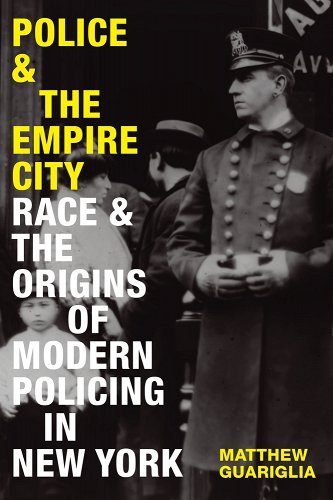One of the biggest challenges for the NYPD, especially in the years following the turn of the twentieth century, was policing the newcomer immigrants settling throughout Downtown Manhattan. These communities became sites where the NYPD eagerly attempted to recruit informants, and eventually, officers as a way to make up for the existing department’s lack of language skills or cultural knowledge. With the exception of the formalized ethnic squads, created and deployed as specific forces to police immigrant neighborhoods in the opening years of the twentieth century it is unclear if there was ever a specific written directive to diversify the department. No memoranda survive directing recruitment priorities or altering civil service exams to make them more accessible to multi-lingual officers. However, it is clear from the writings of police administrators as well as the number of high-profile immigrant officers regularly reported on in the press, that during those years the NYPD dedicated a considerable amount of resources to developing a model for policing immigrant neighborhoods.
White politicians, police, and social scientists alike agreed that, while immigrant crime and the subordination of immigrant neighborhoods was an administrative challenge—it was a challenge that could, at least theoretically, be solved. White immigrant crime, especially attributed by police to large and growing Italian and Jewish neighborhoods, and to a somewhat lesser extent Chinese community, was not inevitable. It could be solved and crime could be eradicated by a coercive combination of Americanization, pacification, surveillance, and proactive policing. To this extent, the police department dedicated a large amount of resources in the year between 1903 and 1910 to infiltrating, surveilling, and forcibly policing immigrant neighborhoods. Francis Vinton Greene’s successor as police commissioner, former Assistant Secretary of the Navy William McAdoo, saw immediately upon taking the post that the “closeness of the living quarters, the narrowness of the streets, and the mixture of races,” made the densely-packed and diverse immigrant neighborhoods, “the most complex and difficult police problem of any similar place on Earth.” He firmly believed that this “problem” could be solved by assimilation and more thoughtful policing. He wrote that if an intelligent foreigner or a curious rural American wanted to see “how under American laws and customs we assimilate and make over the raw foreigner, or even the semi-barbarous alien…” they need only venture down to the Lower East Side to see how “the educational process goes on steadily, and the police as a general rule are tolerant and show intelligence in handling these masses.” There is ample evidence that police were not always as thoughtful and helpful in their dealings with immigrants. After all, McAdoos’s assertion that the “police must study these people, their habits, customs, ideas and somewhat of their history…” did make a substantial impact on how police deployed detectives into some neighborhoods—but was not at all incompatible with a style of policing that involved heavy use of the club and arbitrary arrests.
